Drywall For Bathroom Lowes
Before America discovered drywall, interior home partitions were made of stone, mud, lath, plaster, wood, and concrete in various combinations. Drywall is cheaper, more convenient, and easier to work with. It's commonly used for walls and ceilings, but it's not a waterproof material. Because it's naturally porous and lightweight, it's easy for liquid to seep through and grow mold.
So when you're considering bathroom drywall, you need a few extra steps to prevent water damage. For instance, your drywall might be mixed with foam, plasticizers, and other materials. These substances make your drywall less flammable and reduce the risk of mold and mildew.
The additives also help your drywall absorb less water in general, which is a key feature for bathroom use. Drywall is sometimes referred to as sheetrock or gypsum board, so we'll use these terms interchangeably. But first, let's look at the available types of household drywall.
Types of Drywall
Drywall variants are differentiated by their thickness, the additives included in their formulation, their outer coating colors, and their function. Here are some examples:
- Cement board – infused with cement for waterproofing.
- Greenboard – tinted green and finished with thick wax paper for waterproofing.
- Blueboard – tinted blue and infused with gypsum crystals for better bonding.
- Whiteboard – standard sheetrock, and it's the most common kind.
- Type X and Type C – both these boards are infused with glass to make them fire-proof.
- Paperless – instead of using paper on the outer layer, this board uses fiberglass sheets.
- Purple drywall – this is a brand name for mold-resistant and moisture-resistant drywall.
- Soundboard drywall – infused with wood fibers to improve the passage of sound (e.g. in amplifiers, musical instruments, and speakers).
- Soundproof drywall – laminated with wood, polymers, and gypsum to lower sound transmission (e.g. in recording studios, nurseries, or honeymooners' bedrooms).
- Enviroboard drywall – made of recycled cellulose (e.g. straw from rice, wheat, barley).
Of the variants we've looked at so far, cement, green, blue, purple, and paperless sheetrock are the preferred types for your bathroom. This is because they resist mold and mildew. Be careful though, because while these boards can withstand water better than whiteboard, they're not completely waterproof. You'll still need an extra layer of waterproofing behind your tiles.
You should also be careful if you're installing drywall on your bathroom ceiling. Sheetrock is made of fine fibers that dissolve into a paste when they're exposed to water for prolonged periods. Plus, when the effect of bathroom humidity is combined with gravity, your ceiling boards are likely to sag and break their bond with your ceiling joists. They just won't hold.
Benefits of Drywall
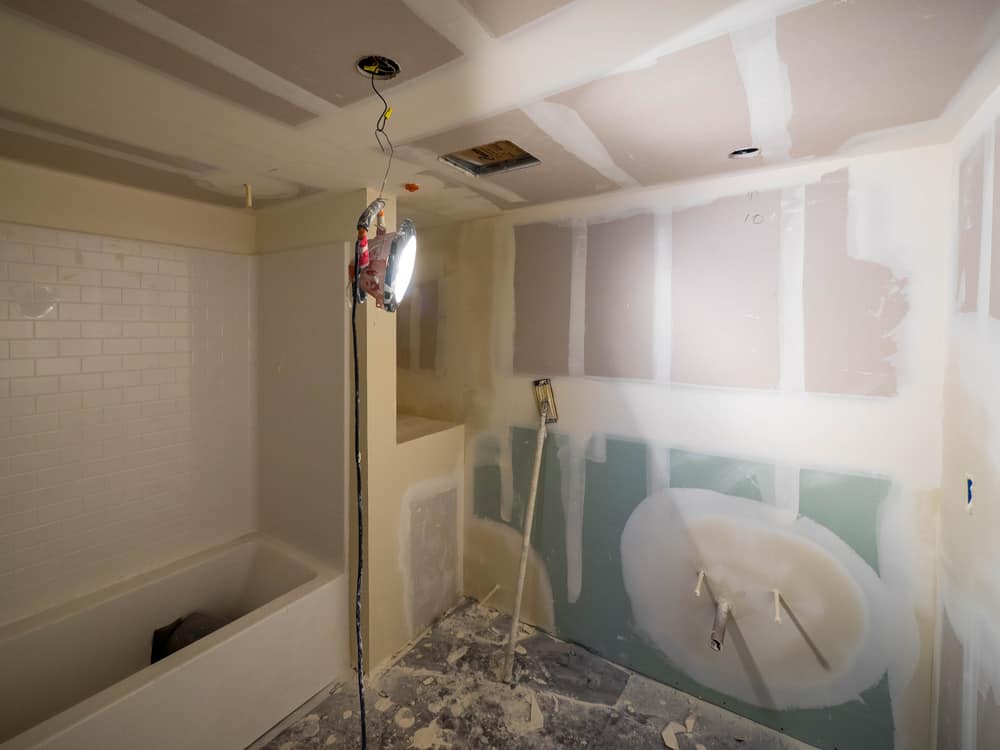
North Americans use more sheetrock than any other nation in the world. It's suited to the local climate, especially in areas prone to natural disasters. In such states, tornadoes, hurricanes, and earthquakes are seasonal. So homeowners have to regularly restore their damaged homes. These houses also need to be lightweight, to reduce the risk of injuring residents during disasters.
Drywall is favored because you can install it quickly for emergency repairs. It's deliberately designed to be porous, which makes it lighter during construction, easier to work with, and cheaper to transport. But the porosity also makes it more susceptible to moisture damage. So be careful when you're selecting the type of sheetrock you'll apply in your bathroom.
Regardless of where you're installing it, drywall is preferred to brick, concrete, stone, wood, or even plaster. You can easily cut it, so sizing, positioning, and framing are easier. It's pocket-friendly, and even if you don't buy fireproof variants, gypsum withstands fire better than other construction materials. This is because gypsum has a lot of intrinsic moisture – about 50%.
How Sheetrock Fights Fire
When your drywall catches fire, the water turns to steam before the solid sections start to burn. This buys you some time so you can escape to safety. A bathroom is unlikely to have flames, but if you plan to take long baths with scented candles, be wary of your bathroom drywall. Invest in fireproof gypsum if you have a Jacuzzi or hot tub because there's an added risk of an electrical fire.
Possibly the biggest advantage of drywall is insulation. The porous fibers encourage capillary movement, so liquids pass through them quickly. But those pores discourage the loss of heat. This keeps your home warmer and lowers your utility bills. Of course, the reverse is also true. A drywall house will cool down more slowly, so it can get stuffy during warmer seasons.
Drawbacks of Drywall
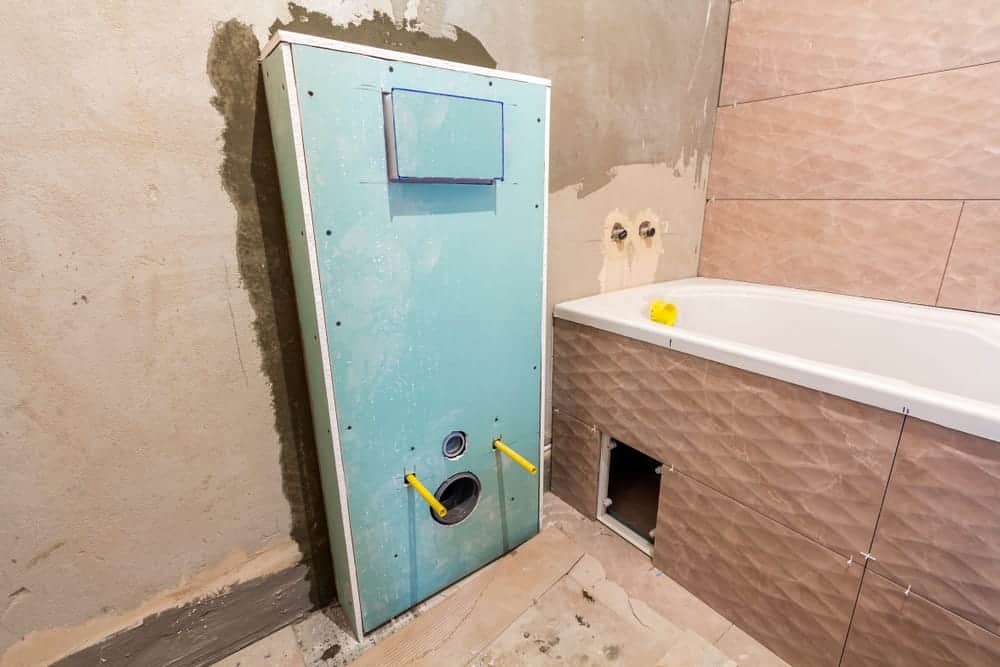
On occasion, the advantages of drywall turn against it. It's quick and easy to install, but it's just as easy to dismantle. So even when nature isn't trying to destroy your house, drywall easily succumbs to wear and tear. The outer surface of your drywall is often made of paper, so you may accidentally punch through the wall, or even fall through it during particularly rough play.
You also have to be careful about the type of drywall you're using. Greenboard may be fine for your basement, and whiteboard is fine for regular room partitions. But if you have a studio (or a teenager's bedroom), you'll have to pay more for specialist drywall. This may include soundproofing, waterproofing, fireproofing, or fiberglass finishing, which all costs extra.
Professionalism is another thing you lose with drywall. If you hire contractors to mount your drywall, you'll end up hiring mechanics (drywall hangers) and a float crew of finishers (mudmen and tapers). These extra hands all cost money, but they'll ensure your drywall is properly fitted and neatly finished. If you install it yourself, you may end up doing a shoddy job.
Contractors vs DIY
The difference may not be that obvious. But little things like uncovered joints, roughly scored outlets, mismatched corners, and visible flaws can make all the difference. Fixing those amateur errors may cost more than if you had hired drywall contractors in the first place.
Finally, while your drywall may be marked as waterproof or fireproof, there's no consistent standard. So, for instance, all colored drywall resists water to some degree. But there's no guarantee that Type C sheetrock from different companies will offer the same degree of fire resistance. Similarly, some builders will swear by greenboard for bathrooms, others prefer blue.
Things to Consider for Bathroom Drywall
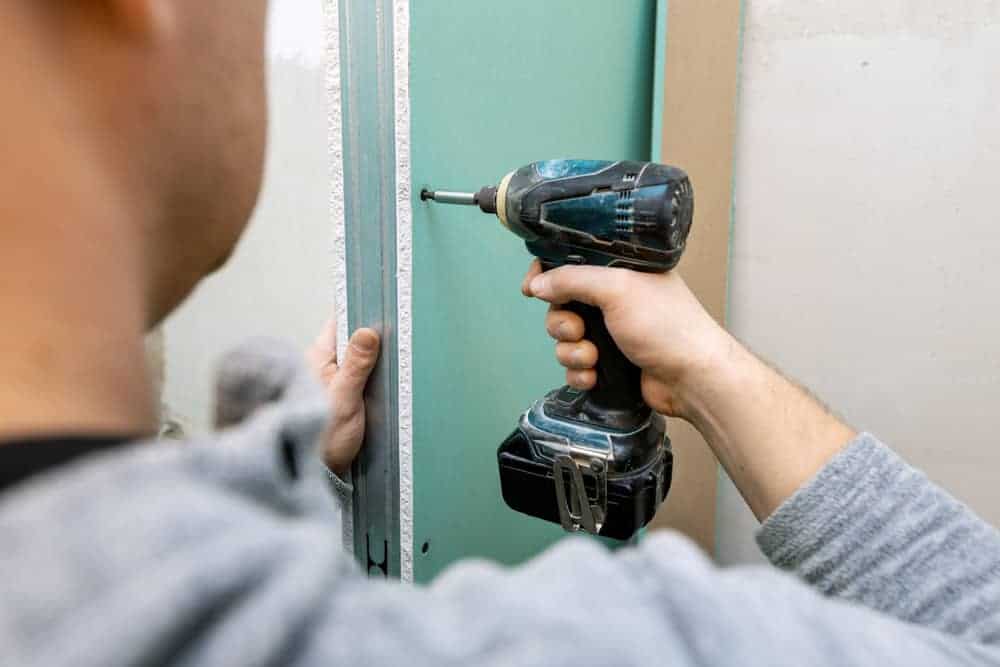
At its core, drywall is a panel of wallboard. A moist mixture of gypsum plaster is squeezed between sheets of heavy paper, pressed down, and dried. The plaster may be mixed with wax, ground gypsum crystals, fiberglass, wax, and similar materials. Professional sheetrock installation takes a day or two. It will probably take longer if you're a DIY contractor.
When water touches your drywall, it quickly seeps though. This water can separate the drywall from your anchoring beams. Or loosen your screws and connectors. Over time, all the plaster turns into a wet, gooey mess and falls apart. Even if the plaster doesn't disintegrate completely, it can warp, discolor, and sag. The wood, water, and plaster can also invite termites and bees.
Avoid Uninsulated Sheetrock
That's why you shouldn't use ordinary sheetrock for your bathroom. Instead, pick a type that's specifically designed for wet conditions. Options include greenboard and cement board. Cement board infuses your gypsum plaster with cement, while greenboard uses thick wax paper for its outer layer. This waterproof wax coating has a green tinge. That's how the drywall gets its name.
Blueboard is also popular in bathrooms. It's not as water-resistant as greenboard, but it dries quickly during application. It's mostly used as a veneer, and it's good at fighting off mold. Its edges are square, so it's easier to install blueboard. Because blueboard particles offer less shrinkage, blueboard forms a thicker outer layer, meaning you only need one coat of veneer.
Best Boards for Bathroom Drywall
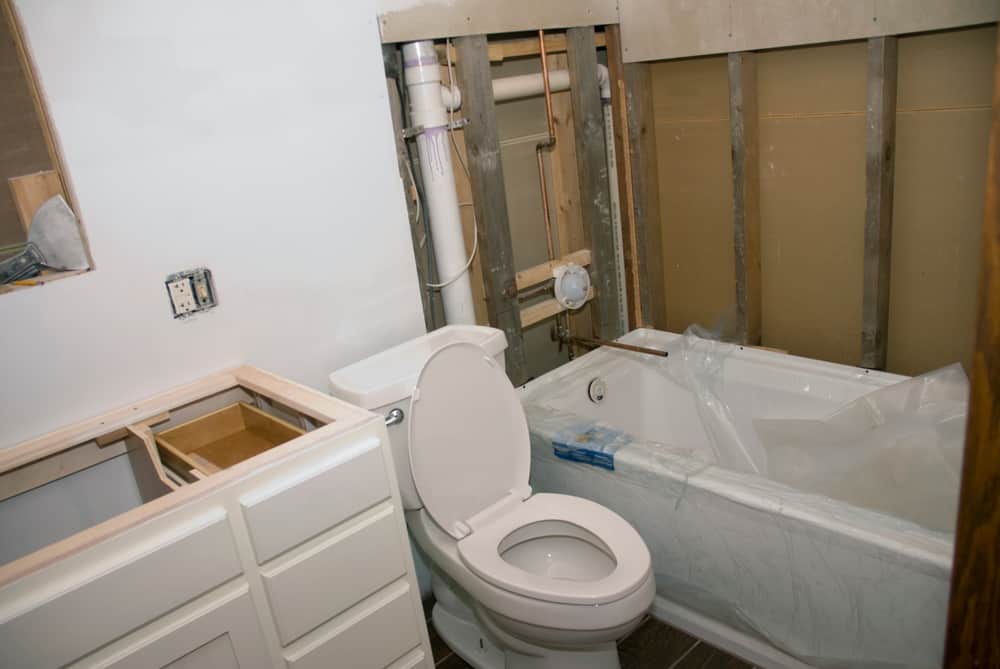
Cement board is among the most popular choices for bathroom drywall. It's expensive though, and it still needs a waterproof barrier. It works better than greenboard but takes longer to install and requires more skill. Greenboard is a more affordable option. And while you can mount it without moisture-proof backing, it won't resist water as well as cement board does.
Other options include drywall that's mixed with fiberglass or regular glass. You can also look for drywall that has fiberglass shells instead of paper backing. The fiberglass does a better job of keeping moisture away. Ensure your bathroom drywall has a waterproof coating, whether that coating is wax or silica. And if the drywall will be submerged, add waterproofing behind the wall.
This last feature is essential for bathtubs, shower enclosures, wet rooms, and sink. These portions of your bathroom will be constantly underwater, so they need additional layers of protection. Check your bathroom drywall regularly. The slimmest crack or the slightest chip could bring the whole wall crumbling before you even notice. And that could cost lives.
Installing Affordable Shower Drywall
If you're looking to do a basic job of drywalling your bathroom, you don't have to spend too much. Spend a few hours watching YouTube tutorials to ensure you understand the technique. The videos will also show you the right tools, so if you don't already have them, you know what supplies to invest in. For the most rudimentary shower, you can use regular whiteboard.
This is commonly available, and because it's cheap, you can afford to make mistakes as you go. That said, whiteboard doesn't hold back water. So before you apply the drywall, insulate your walls with thick plastic sheeting. Lay the plastic carefully, overlapping its sections. You want to be sure there are no lapses where water can leak through. Waterproof tape trumps nails.
Paper Plus Plastic
Yes, you should still secure the plastic sheets using screws and nails. But remember, these holes can lead to leakage and rust, so tape does a better job. Once every crevice is sealed in plastic, use a utility knife to cut your drywall to size. You can also use a utility knife to cut out holes for your faucets and fixtures. Ensure they're in the right position to avoid drywall wastage.
Use your power tools to secure the drywall to your plastic. Double-check that the nails or screws go all the way through to your wall studs. Because this drywall will be exposed to water each time you bathe or shower, and because you've used slim whiteboard, this bathroom drywall isn't enough. Follow up with carefully mortared tiles or cement for further waterproofing.
Maintaining your Bathroom Drywall
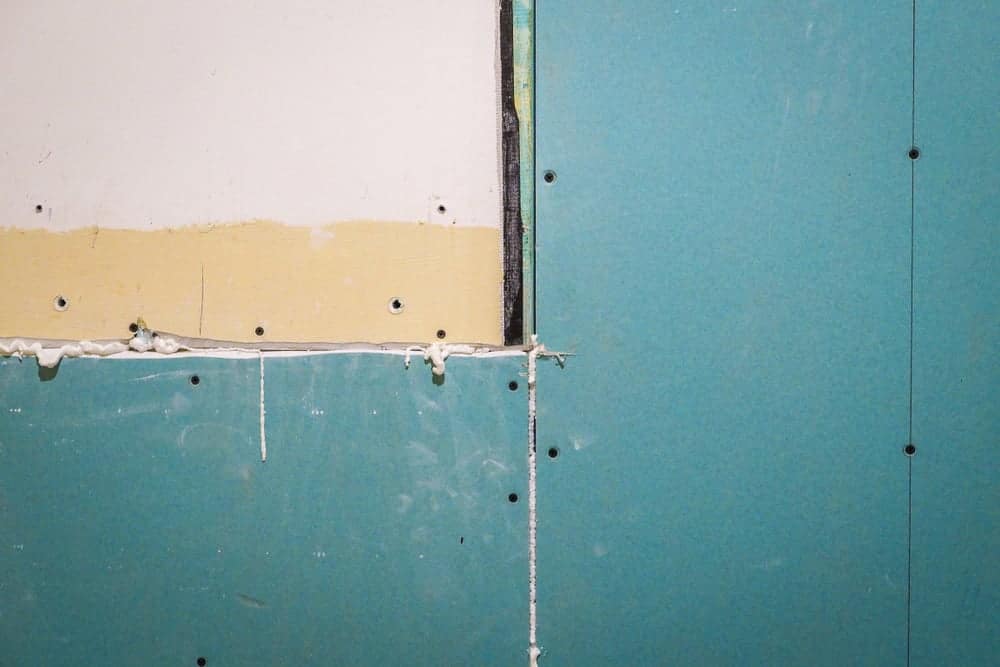
The outer surface of your bathroom drywall is ideally waterproof, whether it's wax-coated or fiberglass. For additional protection, paint the drywall with glossy, waterproof paint. Some homeowners will even lay tiles over the drywall in their shower cubicles and bathtub coping.
Whether your drywall is painted or tiled, it needs regular care. Wipe the walls with a damp cloth dipped in mild detergent. The best time is just after a bath or shower when the walls are steamed up. Though you can run the hot water for a few minutes to generate steam, even if the bathroom isn't in use. Dry the walls to avoid the accumulation of damp smells and humidity.
Keep the bathroom well ventilated, and check the walls for hidden mold. You can sometimes see it peeking through your tile grouting. You might also see dark spots showing through the paint. These suggest a leaky pipe, which increases the likelihood of unseen mold around the leakage. The paint might bubble, peel, or chip, and you might notice an odd tell-tale smell.
Resolving Mold Problems
When you suspect mold in your bathroom drywall, you may need professional conformation. Inspectors can use fiber optics or mold testing kits. For both systems, you have to make a small hole in the drywall and poke around. An inspector may have to physically access your ventilation ducts and look around. Never do this yourself, as you may catch a respiratory infection.
If you've noticed mold, you can buy mold removal spray at the hardware store. Or you can brew a home-made concoction of vinegar, borax, and water. Both of these options are good for wall tiles. But for the mold that may be hidden behind the surface of your bathroom drywall, it's best to call professionals. Otherwise, your whole bathroom wall may cave in … or you might get sick!
Bathroom Drywall Checklist
Bathroom refurbishments are among the most common DIY projects in the US. And you'll probably avoid (expensive) outside help here are some tips for your bathroom drywall:
- Look for sheetrock that can resist mold, moisture, and mildew.
- We recommend cement board, greenboard, blueboard, paperless, and purple board.
- Confirm whether you need additional waterproof insulation.
- Check your drywall regularly for any cracks or flaws.
- Use the right fasteners for your chosen type of sheetrock.
- Consider sound transmission for en-suite bathroom drywall.
What's on your bathroom walls right now? We'd love to see a before-and-after in the comments!
Source: https://www.sunrisespecialty.com/bathroom-drywall








Tidak ada komentar:
Posting Komentar